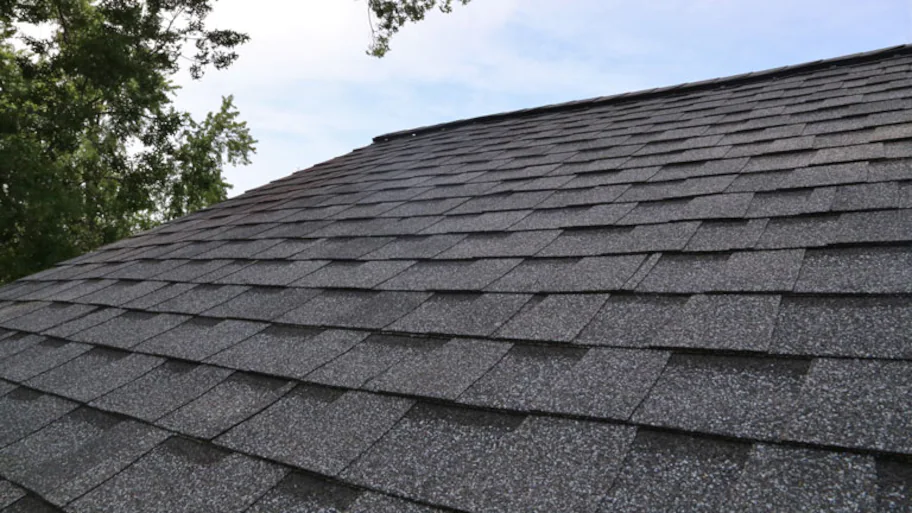How Gainesville Roofing Companies Can Change Your Home's Outside
How Gainesville Roofing Companies Can Change Your Home's Outside
Blog Article
Best Practices for Ensuring Proper Roof Air Flow
A well balanced intake and exhaust vent proportion, typically 1:300, plays an essential function, with consumption vents preferably put at the lower edge of the roof covering for awesome air access and exhaust vents at the top for warm air departure. Maintaining insulation away from vents is essential to prevent air flow limitation.
Understand Air Flow Essentials
Correctly comprehending ventilation fundamentals is vital for making certain the longevity and effectiveness of roof. Effective ventilation reduces moisture buildup and temperature level extremes in the attic room, both of which can bring about substantial architectural damage with time. A well-ventilated roof covering helps in protecting against usual problems such as mold and mildew development, timber rot, and ice dams, which can endanger the stability of the roof products and the underlying structures.
The main objective of ventilation is to assist in the movement of air, enabling a regular exchange in between the exterior and indoor settings. This equilibrium is achieved through a combination of consumption and exhaust vents that collaborate to preserve optimum airflow. Intake vents, commonly located along the eaves or soffits, enable fresh air to go into the attic room, while exhaust vents, typically located at or near the roof ridge, allow hot, moist air to escape.
Secret factors affecting the performance of roofing air flow consist of correct placement, sufficient sizing, and making sure that both intake and exhaust vents are unhampered. Normal examination and maintenance are essential to identify potential obstructions, damage, or inadequacies in the air flow system, thereby guarding the roofing's efficiency and longevity.
Kinds Of Roof Vents
Roofing vents play a vital function in preserving effective attic room ventilation and, by expansion, the overall wellness of the roof system. Numerous kinds of roofing vents are available, each with special advantages customized to details roof demands.

Soffit vents are mounted under the eaves and operate in tandem with roofing system vents to make sure a well balanced consumption and exhaust system. By allowing cooler air to get in from below, soffit vents help with the expulsion of hot air through upper vents. Gable vents, situated on the outside walls of the attic, offer one more reliable solution, especially in homes with gable roof coverings.
Examine Your Current Air Flow

Next, consider the age and problem of your roof covering products and ventilation parts. Older systems may not adhere to present building ordinance or may have deteriorated in time, lowering their efficiency. Conduct a complete exam to determine any signs of deterioration, such as corrosion, damages, or gaps that can endanger the system's efficiency.
In addition, measure the attic room temperature level and moisture levels. High temperatures and humidity can show poor ventilation.
Installment Best Practices
Effective setup of roofing air flow systems is critical for making sure optimal performance and longevity. Correct installment begins with understanding the certain air flow demands of the roofing system and the building it covers. This includes determining the appropriate ratio of consumption to tire vents, typically sticking to the 1:300 rule, which specifies one square foot of air flow for each 300 square feet of attic flooring space.

Consumption vents must be installed at the roof's reduced edge, usually in the soffits, to enable great air to enter. Exhaust vents, on the other hand, ought to be mounted near or at the roof's optimal to assist in the departure of warm, moist air.
Seal all vent connections diligently to stop air leaks and possible water seepage. Use top quality products and comply with manufacturer standards to make sure resilience and performance. In addition, incorporating ridge vents with baffles can substantially enhance air flow efficiency by preventing wind-driven rainfall and snow from getting in the attic.
Eventually, specific setup of roof air flow systems mitigates possible concerns such as mold and mildew growth, ice dams, and structural damages, ensuring the roof covering's honesty find out this here and the structure's general health.
Normal Maintenance Tips
Consistency in upkeep practices is essential to making sure the lasting performance of roofing ventilation systems. During these assessments, ensure that vents are complimentary of debris, nests, and various other obstructions that might restrain airflow.
Cleaning the vents is one more necessary job. Use a soft brush or a vacuum to remove dust and particles from consumption and exhaust vents. Be careful not to harm the air vent screens or louvers throughout the process. Furthermore, recommended you read evaluate the attic area for any type of signs of water damages, which can compromise the honesty of the roof.
Proper insulation is equally crucial. Make certain that attic room insulation does not obstruct the vents, as this can significantly limit airflow. If any type of insulation has moved or resolved, rearrange or change it to maintain a reliable obstacle.
Lastly, replace any harmed or missing out on elements promptly. Busted vents, fractured roof shingles, or shabby flashing can all add to insufficient air flow and must be addressed without hold-up. Normal upkeep makes sure that the roofing ventilation system functions efficiently, thus expanding the life expectancy of the roofing system itself.
Conclusion
Making certain correct roof air flow is extremely important for maintaining the performance and sturdiness of a roofing system. Adherence to the 1:300 consumption and exhaust vent ratio, coupled with the tactical placement of vents, is essential.
A balanced consumption and exhaust air vent ratio, commonly 1:300, plays a pivotal function, with intake vents ideally put at the reduced edge of the roof covering for trendy air entry and exhaust vents at the optimal for warm air leave. Consumption vents, generally located along the eaves or soffits, enable fresh air to get in the attic room room, while exhaust vents, typically located at or near the roofing news system ridge, enable hot, humid air to leave.
Soffit vents are set up under the eaves and job in tandem with roof vents to make certain a well balanced consumption and exhaust system. By enabling cooler air to go into from below, soffit vents facilitate the expulsion of warm air with upper vents. Adherence to the 1:300 consumption and exhaust air vent ratio, combined with the strategic placement of vents, is crucial.
Report this page